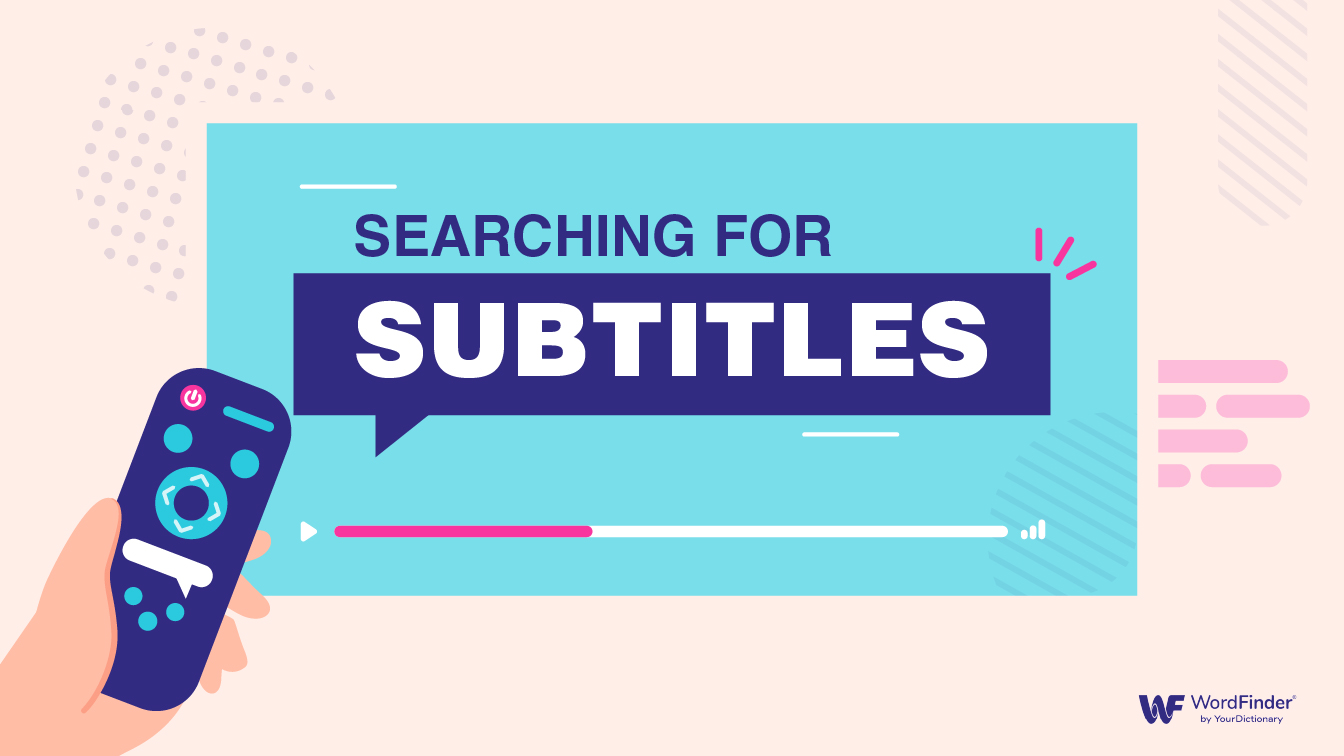Enhancing Accessibility and Understanding in Media Content
It’s an age-old question that has divided TV and movie lovers for decades and has caused more arguments than who’s sitting on the remote: closed captions or no closed captions? For the die-hard closed caption fans who don’t want to miss a single line of dialogue, what drives them to press the CC button and read along with the action? We surveyed the subtitle preferences of 1,000 Americans to determine the leading reasons behind their use of this accessibility tool.
Key Takeaways
Nearly a quarter of Americans believe subtitles should be on by default.
Arnold Schwarzenegger is the hardest-to-understand actor, according to Americans.
Americans are nearly 80% more likely to watch foreign shows and movies subbed versus dubbed.
The No. 1 reason Americans prefer anime subbed over dubbed is to avoid words and phrases getting lost in translation.
Subtitle Usage in America
Why do some viewers enable closed captions even when watching a show in their natural language? Let’s look at how often viewers use subtitles and why they enable them.
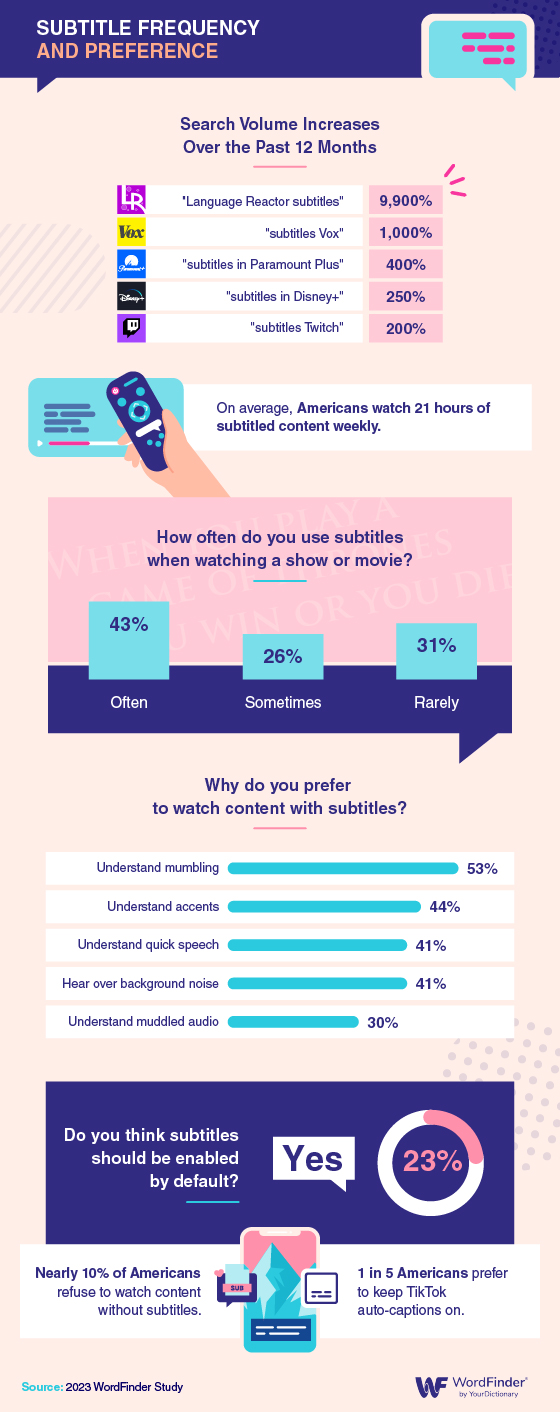
Screen enthusiasts have been looking to use captions more than ever within the past year, especially now that captions can help them learn other languages. Search interest in Language Reactor, a Google Chrome extension that creates dual language captions, has increased by a staggering 9,900% in the past 12 months.
We also saw a 1,000% increase in search volume for “subtitles in Vox,” a platform that offers news and entertainment coverage. Viewers have wanted to use captions on popular TV and movie streaming platforms as well; searches for “subtitles in Paramount Plus” rose 400%, and the search volume for “subtitles in Disney+” was up 250%.
Viewers’ interest in closed captions doesn’t stop at the search box. Americans watch an average of 21 hours of subtitled content each week, with 68% reporting they turn subtitles on sometimes or often. If only subtitles counted toward our yearly reading goals! Survey participants reported their top three reasons for turning on subtitles were to understand the following:
Mumbling
Accents
Quick speech
Because these reasons are closely tied to comprehending the content, it makes sense that nearly a quarter of Americans believe that subtitles should be on by default. Insider reported that while watching movies and TV shows with subtitles is useful for clarity and can improve the viewing experience, delays between the captions and audio frustrate viewers. This disconnect can also reduce the impact of dialogue that’s read before it’s voiced on screen. An idea that extends beyond movies and TV and into social media, with 1 in 5 Americans utilizing TikTok’s auto-caption feature.
However, for viewers using closed captions as a tool for language learning, the benefit of captions outweighs any distraction from the actors’ performances or stellar soundtrack. And we also discovered that closed captions are invaluable for reducing language barriers, which we’ll get into next.
Reducing Language Barriers
Whether you’re watching a show in a foreign language or with foreign accents (we’re looking at you, Arnold), subtitles help close the comprehension gap.
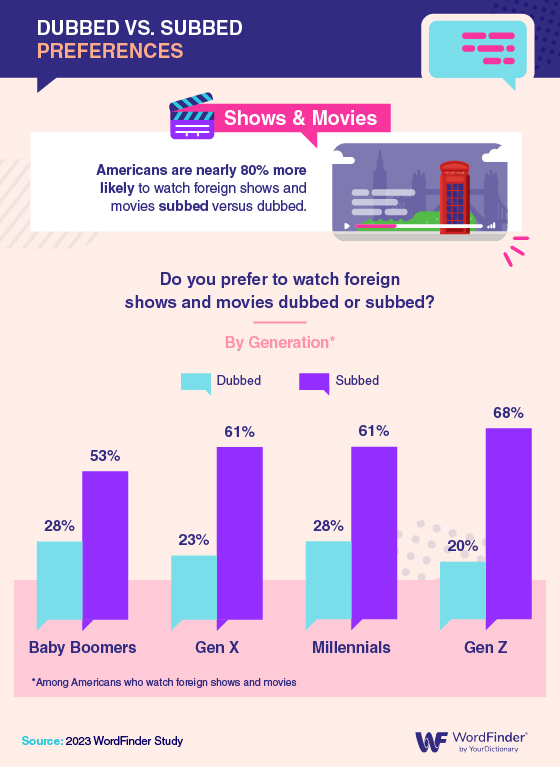
Foreign language shows and films are either subbed, meaning that the translation appears as a subtitle, or dubbed, meaning that the foreign dialogue is translated and integrated into the sound. We found that Americans are nearly 80% more likely to watch foreign shows and movies subbed versus dubbed.
It’s a testament to the popularity of closed captioning that even when watching a dubbed foreign show, 6 in 10 Americans prefer to use subtitles. The translation could be perfect, and the dubbed voice acting phenomenal, but it’s no secret that many shows are difficult to hear and understand.
Here are the shows and actors Americans prefer to watch with the subtitles turned on.
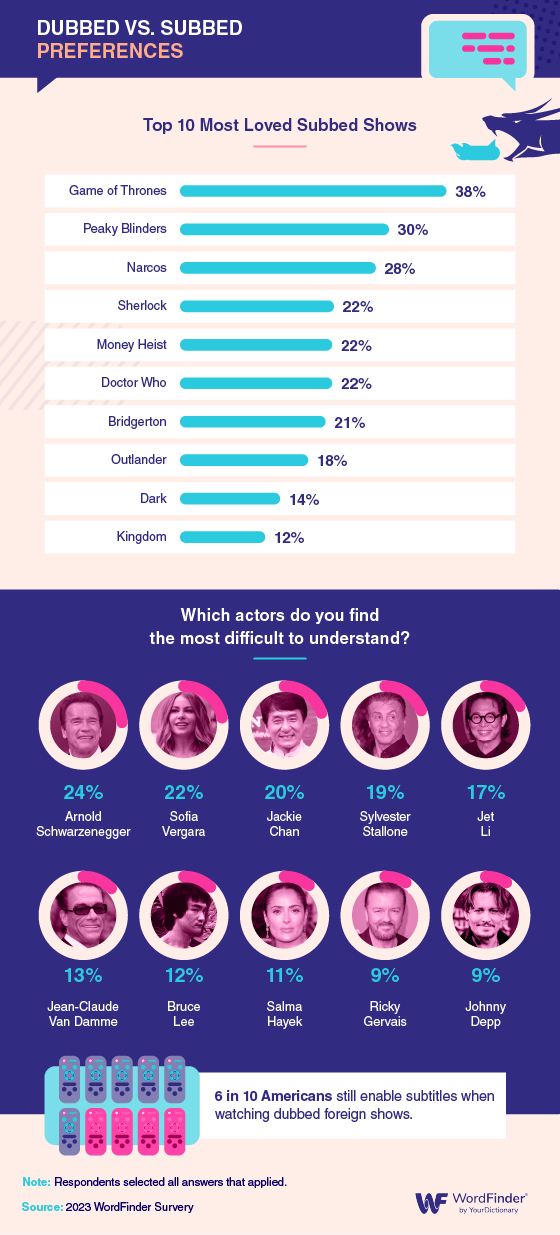
Thick accents can be tough to decipher. According to Americans, Arnold Schwarzenegger has led the pack of the hardest actors to understand. Modern Family star Sofia Vergara came in at a close second, followed by martial arts actor Jackie Chan.
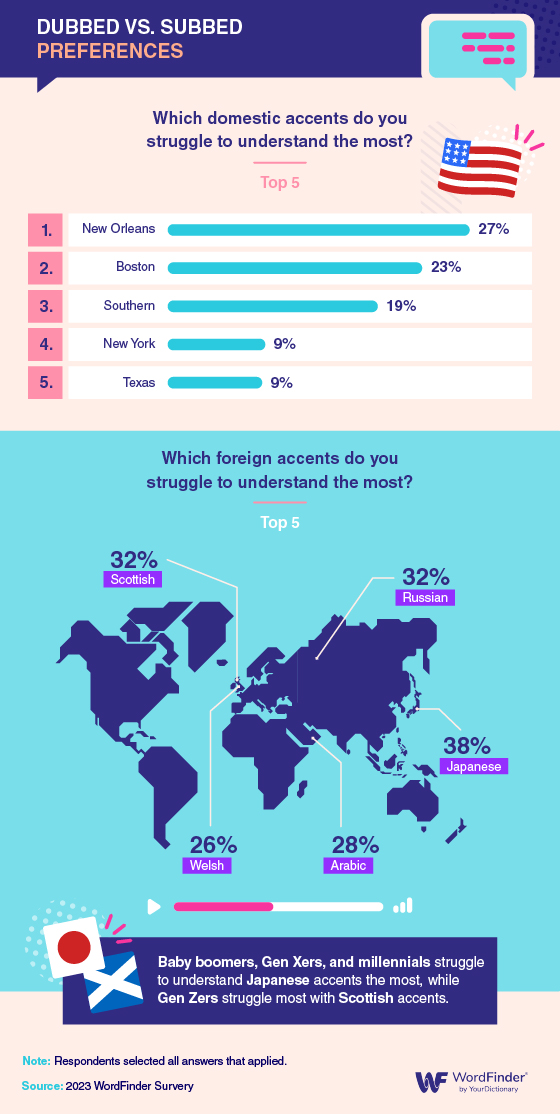
Two of the most challenging accents for survey respondents to understand, Japanese and Arabic, are also among the most challenging languages for English speakers to learn. The older three generations struggled most with Japanese accents, while Gen Zers had issues with Scottish accents. But these challenges shouldn’t deter anyone from binge-watching the best foreign language shows on Netflix. If anything, the benefits of subtitles are a reason for viewers to add more foreign shows to their watchlist.
Enhancing the Anime Experience
For anime fans who aren’t lucky enough to know Japanese, the choice between subbed or dubbed can seem like a question of the lesser of two evils. However, our research shows that anime fans largely favor subbed shows.
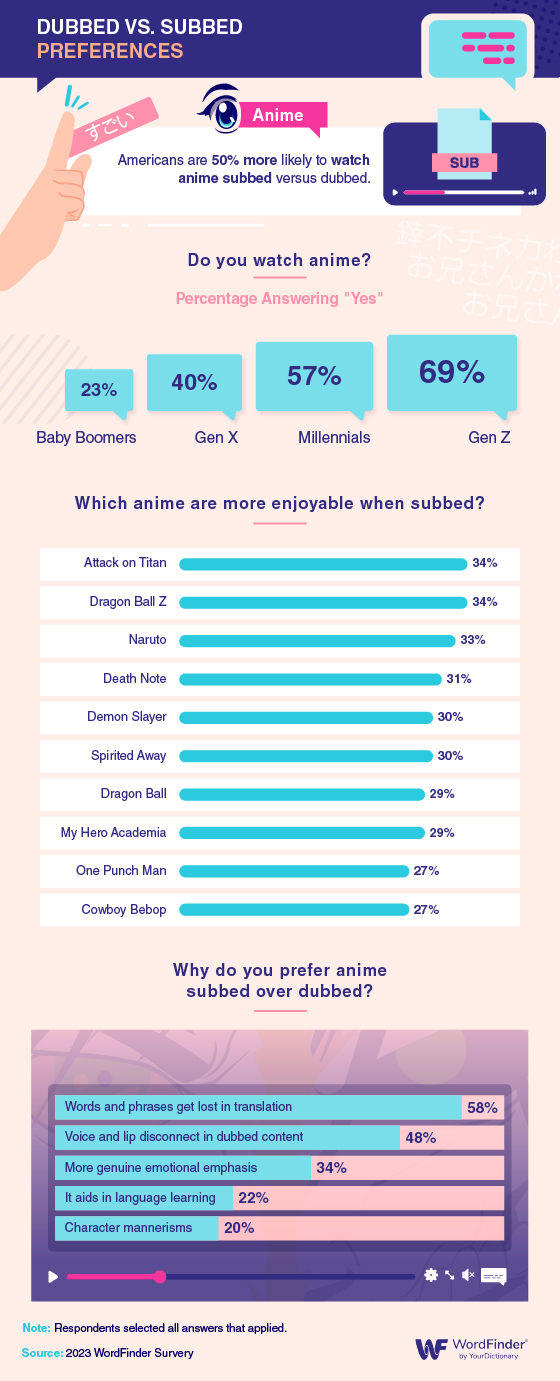
It might seem that viewers would prefer dubbed anime versions so they don’t miss a single moment in this action-packed genre, but that’s not the case. American anime viewers, most of whom are Gen Zers, are 50% more likely to watch anime subbed versus dubbed.
This preference makes sense, considering that dubbed shows often aren’t as faithful to the original content. Discrepancies in anime translation happen due to length restrictions which don’t allow translators to find the right word. And there’s also the common practice of translators tailoring the dialogue to a Western audience.
Because the top reason for the subtitle favoritism is a concern that dialogue will be lost in translation, it’s understandable that respondents said they prefer subbing some of the most popular anime shows of all time, like Dragon Ball Z and Naruto. After investing days (or weeks) worth of hours watching a show, it’s not surprising that viewers want to ensure they get an accurate translation.
More Than Just Words on a Screen
The recent spike in online searches for subtitles indicates that closed captioning versus audio dubbing is far from a close call for Americans. Because subtitles increase dialogue comprehension, it’s no wonder many viewers are willing to get an eye workout if it means they can understand the whole picture. The next time someone complains about the subtitles during a movie night, tell them you’re not alone in your viewing preferences!
Methodology
We surveyed 1,000 Americans regarding their subtitle preferences. The mean age of respondents was 41 years old. Among them, 50% were male, and 50% were female. Respondents comprised the following generational breakdown: 8% Gen Z, 50% millennials, 29% Gen X, and 14% baby boomers. Additionally, we analyzed Google Trends search data for subtitle-related search popularity.
About WordFinder®
WordFinder® is a free word games helper and a key resource for word game enthusiasts. Our free tools include a scrabble word finder, words with friends cheat, wordle solver, daily wordle hints, NYT connections hints, and more. Our platform is dedicated to helping users unscramble letters, find the right words, and gain a competitive edge in their favorite word games.
Fair Use Statement
Feel like sharing this article with a friend or fellow anime fan? Readers can share these findings for non-commercial purposes only, provided they link back to this page.
